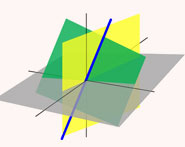


 تاريخ الرياضيات
تاريخ الرياضيات
 الرياضيات في الحضارات المختلفة
الرياضيات في الحضارات المختلفة 
 الرياضيات المتقطعة
الرياضيات المتقطعة
 الجبر
الجبر
 الهندسة
الهندسة 
 المعادلات التفاضلية و التكاملية
المعادلات التفاضلية و التكاملية 
 التحليل
التحليل
 علماء الرياضيات
علماء الرياضيات |
Read More
Date: 11-8-2020
Date: 2-12-2020
Date: 24-8-2020
|
The number one (1), also called "unity," is the first positive integer. It is an odd number. Although the number 1 used to be considered a prime number, it requires special treatment in so many definitions and applications involving primes greater than or equal to 2 that it is usually placed into a class of its own (Wells 1986, p. 31). The number 1 is sometimes also called "unity," so the  th roots of 1 are often called the
th roots of 1 are often called the  th roots of unity. Fractions having 1 as a numerator are called unit fractions. If only one root, solution, etc., exists to a given problem, the solution is called unique.
th roots of unity. Fractions having 1 as a numerator are called unit fractions. If only one root, solution, etc., exists to a given problem, the solution is called unique.
The generating function having all coefficients 1 is given by
 |
(1) |
The number one is also equivalent to the repeating decimal
 |
 |
 |
(2) |
 |
 |
 |
(3) |
REFERENCES:
Wells, D. The Penguin Dictionary of Curious and Interesting Numbers. Middlesex, England: Penguin Books, pp. 30-32, 1986.



|
|
|
|
دراسة تكشف "مفاجأة" غير سارة تتعلق ببدائل السكر
|
|
|
|
|
|
|
أدوات لا تتركها أبدًا في سيارتك خلال الصيف!
|
|
|
|
|
|
|
العتبة العباسية المقدسة تؤكد الحاجة لفنّ الخطابة في مواجهة تأثيرات الخطابات الإعلامية المعاصرة
|
|
|